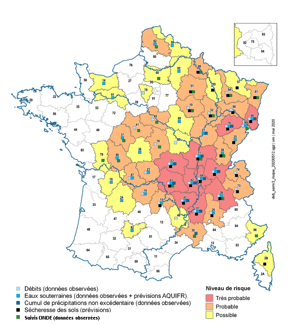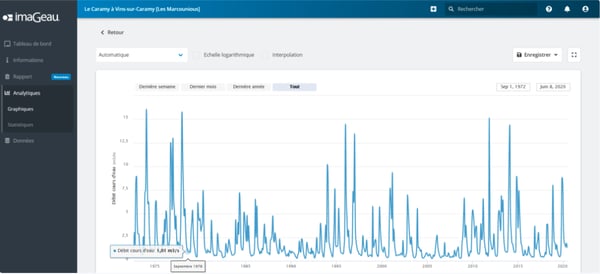Around half the world's population now suffers from the effects of water stress at least once a year. And our country is no exception. Global warming is making the risk of drought an increasingly urgent issue for France.
More than 2,000 billion m3 of groundwater, an exceptionally dense network of water tables and surface watercourses, and 175 billion m3 of rainfall every year to feed them... On paper, France should have no lack of water, and yet the risk of drought is now very much a reality.
In 2019, thirteen departments experienced long periods of disruption to water supplies — as much as 100 days for some — over large areas; in the department of Creuse, these affected half of its territory.
According to forecasts published in May by the Ministry for the Ecological Transition, more than half of the French departments - the majority of them in eastern and central France - were at risk of drought in summer 2020. For eleven of them — in the regions of Massif Central, Haute-Saône and Haut-Rhin — the risk of water stress was rated as ‘very likely’. According to the experts, over the next decade, few regions of France will escape these problems.
The risk of drought in France is exacerbated by global warming

The definition of drought is an episode of water shortage that effects soils, wildlife, plant life and human activity. It is also referred to as water stress when demand for water exceeds available resources. There can be several causes for this:
- low rainfall, especially in winter. Because this is the time of year when groundwater levels are replenished.
- the overexploitation of water resources This is essentially an issue of water management policy, which can be significantly challenged by heat waves or the general rise in temperatures and disruption of rainfall patterns caused by global warming.
National weather service Météo France says that the country faces an increasing risk of drought. Over the two decades between 1990 and 2010, the proportion of mainland France subject to droughts has grown from 5% to 15%. Looking at the period from 2046-2065 on the basis of a median greenhouse gas emissions scenario, the Explore 2070 project forecasts a decrease in watercourse mean annual flow rates of between 10% and 40% relative to the baseline period of 1961 and 1990. These forecasts estimate that the volume of water available to top up groundwater levels will fall by between 10% and 25%.
Water stress: a website for key information
But it is important to bear in mind that this climate trend towards increasing drought can be exacerbated or mitigated by the water management policies we adopt. So solutions are available, and they need to be built on the basis of reliable data that is preferably accessible in real time.
Which is precisely what is provided by the Info-secheresse.fr website recently made available online by Saur Group company ImaGeau, whose specialty is the active management of water based on the monitoring of rainfall, temperature, groundwater levels and river flow rates. The website brings together a series of key indicators to facilitate decision-making.
